Buyer personas are an essential tool in any inbound marketing strategy. They help you understand your ideal customer, what they’re looking for, and how you can best interact with them.
In this article, we’re examining 3 different buyer persona examples (B2C, B2B, and Non-Profit) and reviewing how you can create your own buyer personas. Check out the video below for a quick tutorial!
What Is a Buyer Persona?
A buyer persona represents your ideal customer. It is created based on the research and data that you have collected on your real customers. Key data points to include when you create your buyer persona (or buyer personas) are age, location, education level, profession, hobbies/interests, goal/objectives, and of course, pain points.
The purpose of a buyer persona is to give you greater insights into who your customers are and what they are looking for. Once you understand this, you'll have a better idea of how to develop your products or services and how to market them effectively.
How to Create a Buyer Persona
There are three major steps to creating a buyer persona. Even though buyer personas are semi-fictitious representations of people, the data must always be based on real people and their experiences. The most important thing you have to do is gather information, properly organize it, and assess it all.
1. Conduct Interviews to Gain Understanding
Use your database to conduct interviews that will give you a better understanding of your customers. Ask your current customers, potential leads, and connections in your professional network for interviews.
In the interviews, ask questions that will allow you to truly get a complete understanding of the customer, why they use and enjoy your product, their experience with the sales process, and their demographic information. In our free downloadable template pack below, we’ve attached a guide that has over 30 questions you can ask in your interviews.
2. Gather and Analyze Data
After you’ve conducted your interviews take time to analyze all of the qualitative data you’ve gathered. Do you see any common themes or patterns? Where are the similarities and how can the interviews be grouped? What is the common demographic information? What are the most frequently repeated goals and pain points? Finding patterns and grouping them properly will allow you to begin conceptualizing your different buyer personas.
3. Apply the Data
Now that you’ve organized and analyzed the data, it’s time to finally put it to use. Create your buyer personas by using a visual guide, like our templates. Add a photo, nickname, age, and all of the most important data points organized into different sections.
You may have anywhere from 2-5 buyer personas, and you may even come up with negative buyer personas (people who you don’t want as customers.) The point of this is to help you, so design it in a way that gives you as much relevant information as possible, while also being simple and easy to understand.
3 Examples of Buyer Personas
Now that you know how to make a buyer persona, let’s look at a few examples of them before you get started. The following examples have been created using Cyberclick’s own templates.
B2C Buyer Persona: Millennial Molly
In this example, this buyer persona was created by a food kit delivery service. Millennial Molly is a young professional woman who wants to eat healthier but lacks the time to research fresh recipes and buy the ingredients.
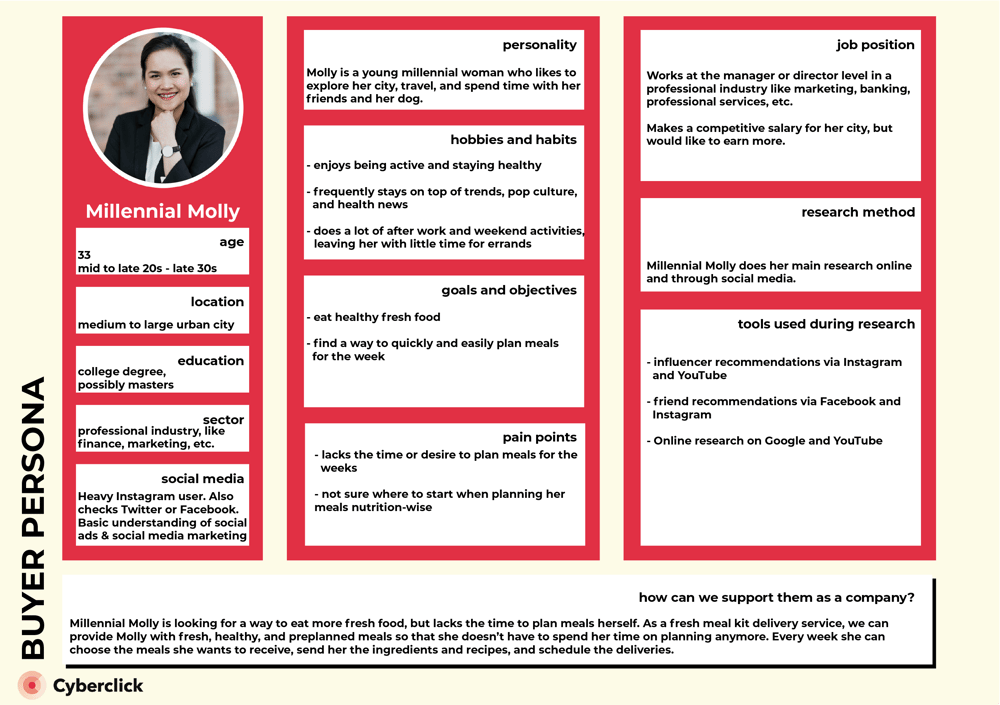
A B2C company can use this buyer persona to communicate their product as a direct solution to Molly’s pain points. Having an understanding of her problems allows the company to easily come up with ideas of how they can position themselves as the solution and how best to communicate with "Molly." This planning can then be placed in the “How can we support them” section.
It's also important to take into account how Molly does her research before she makes a purchase. Not all of your ideal customers will look for your product or your competitor’s products using the same methods. It's important to take this into account and come up with an action plan. Since we know she likes to do her research on Google and YouTube, this provides the company a chance to create great content about food preparation and eating healthy that will attract Molly to their website.
B2B Buyer Persona: Bilingual Brandon
In this example, Bilingual Brandon works for a digital industrial company that creates common household products like microwaves, washing machines, and refrigerators. As his company is expanding into international markets, he is seeking a company that can translate all of the collateral for their products.
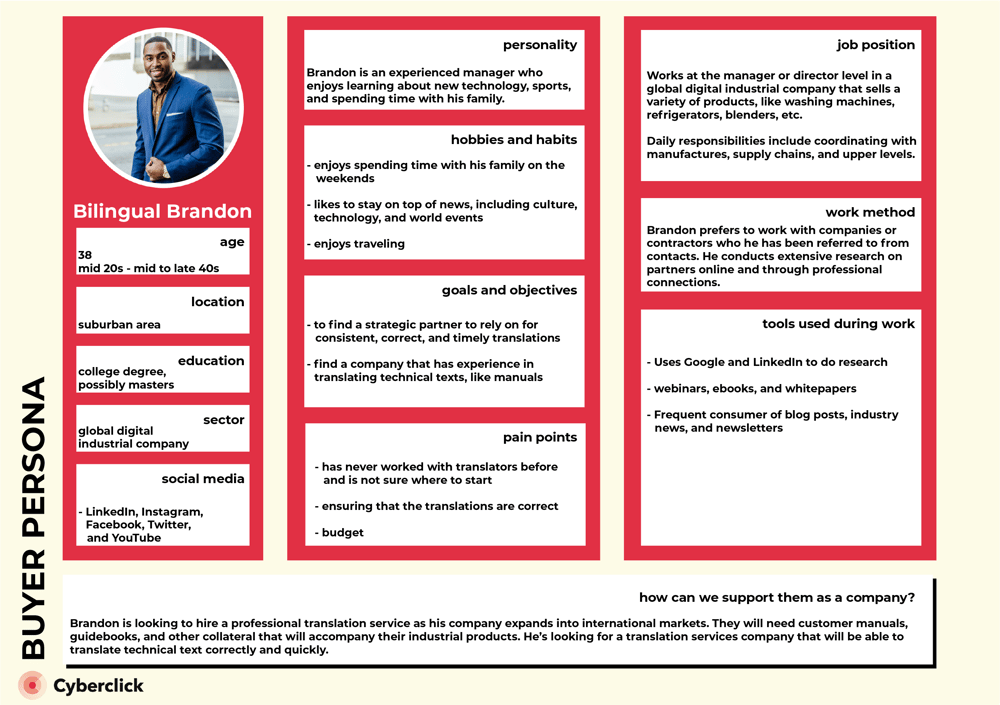
For a B2B context, it's especially important to take into account the buyer persona’s job position, sector, work methods, and tools used during work. Understanding all of this information will allow the company (in this case, a translation services firm) to understand their role in helping their future customers.
In this case, we know one of Brandon’s pain points is that he has never worked with a translation firm before. A good piece of content for Brandon would be an ebook all about how outsourcing works, particularly in this field. Use the buyer persona to build your inbound marketing communications.
Non-Profit Buyer Persona: Donor Dana
Buyer personas are not just limited to for-profit companies. In fact, buyer personas are especially important for non-profit organizations as they often have a wide variety of donors and volunteers from all types of backgrounds.
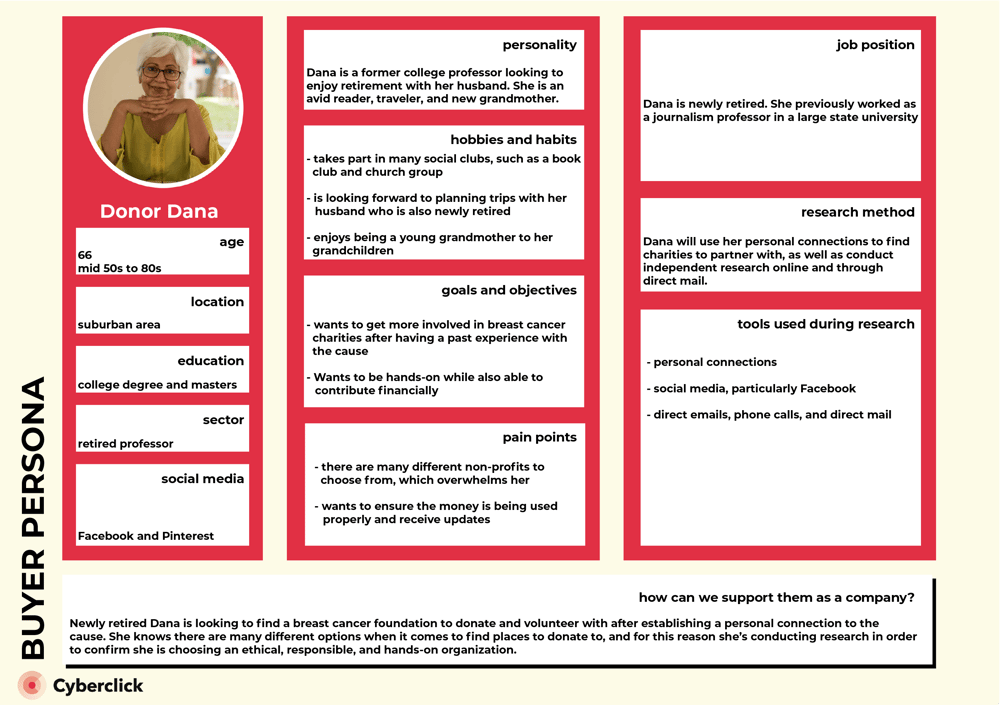
In this example, we see that Dana has established some sort of personal connection with breast cancer, and now she is looking to donate her time and money to a good organization. Dana’s biggest concern is that there are many different breast cancer organizations and she wants to ensure that her money is being used correctly.
For Dana, the most effective content would be articles, newsletters, and direct mail centered around the contributions and work that the foundation is doing. She is also active on Facebook and would like to follow along with the organization's journey online.
As you can see, your buyer persona can be just as unique as your brand is. The most important thing is to build it in a way that helps you. Use these examples as guides, but remember to customize the information in a way that suits your brand.
Adapting Your Buyer Persona to Changing Market Trends
Though buyer personas are important to understanding and catering to consumer needs, they are not static entities. In an ever-evolving market, shifts in consumer behavior or technology demand a constant reassessment of your buyer persona(s). Adapting to changing market trends involves continually evaluating and refining your buyer persona(s). It's important to keep an eye on emerging trends, shifts in consumer preferences, and evolving market dynamics. Regularly updating and refining their personas allows businesses to remain agile and responsive, ensuring that their strategies are aligned with the current needs and aspirations of their target audience. By gathering real-time data, conducting regular assessments, and being open to changes, companies can stay relevant and competitive in the market.
Shanon es una diseñadora multidisciplinaria especializada en la creación de diversos activos digitales, como campañas digitales, videos o ebooks. Con experiencia en marketing digital y inbound marketing, Shanon destaca en el desarrollo de landing pages y webs para clientes usando HubSpot.
Front-End Developer & Graphic Designer. Shanon is a multidisciplinary designer specialized in creating diverse digital assets, including digital ads, videos, ebooks, and more. With a background in digital and inbound marketing, Shanon excels in developing impactful landing and web pages for clients using HubSpot.

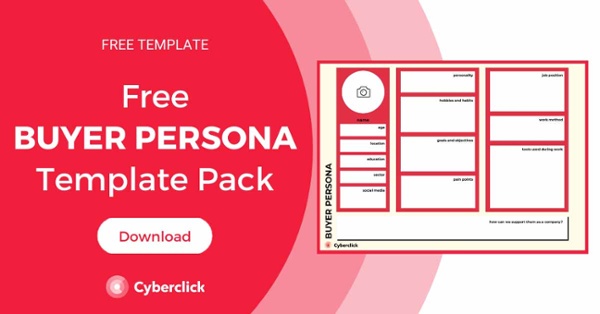

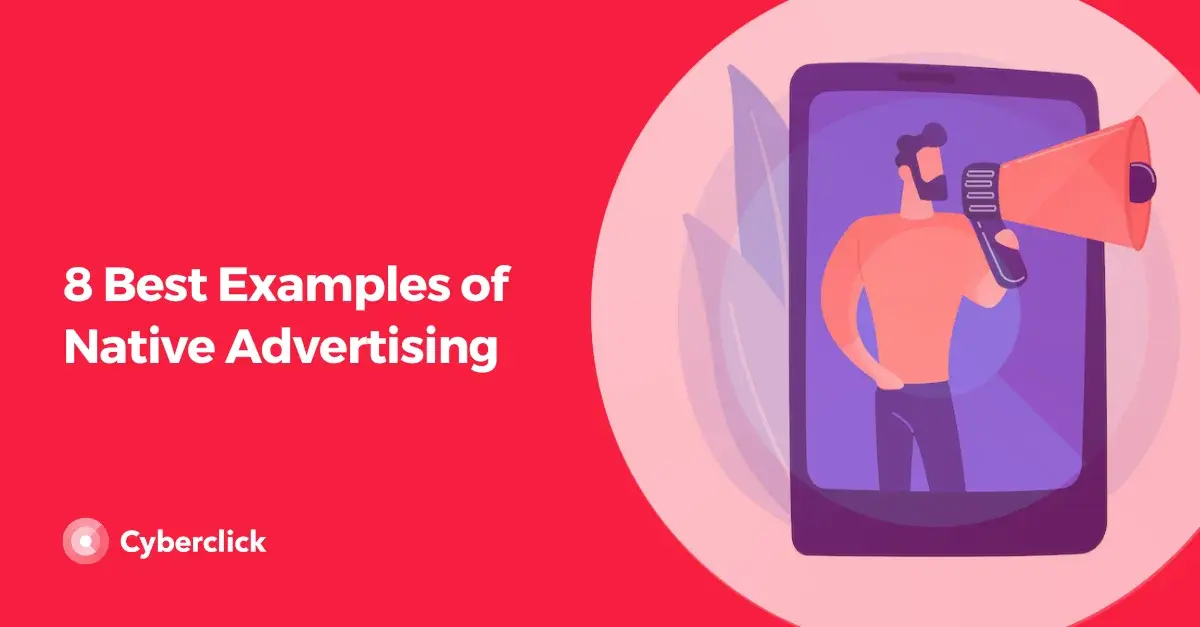
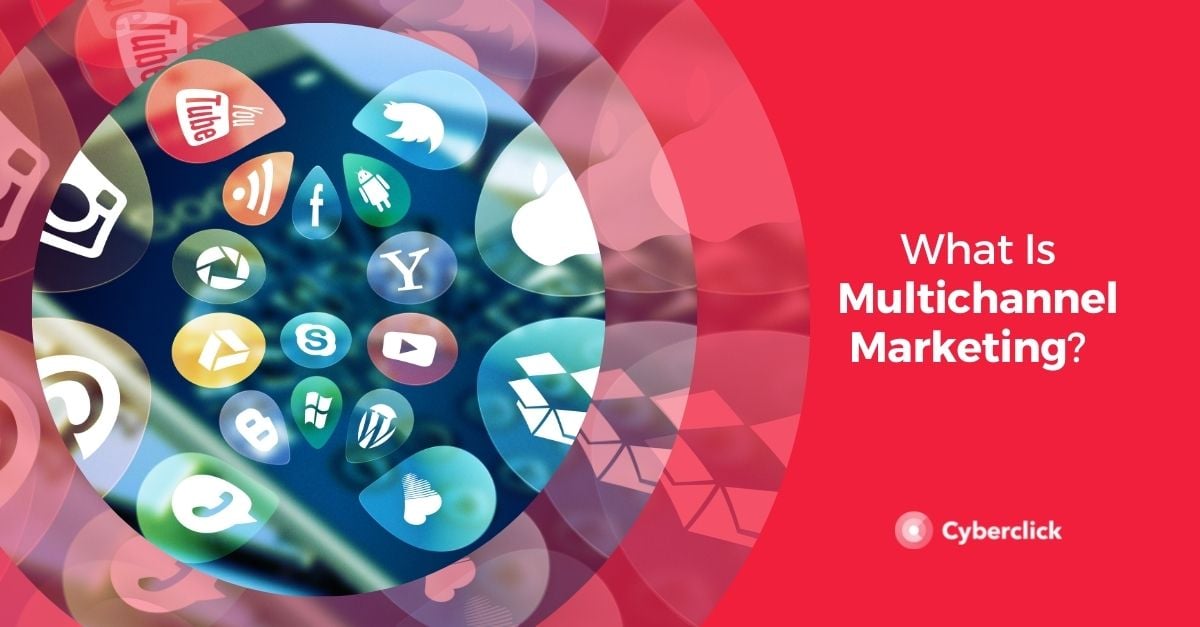
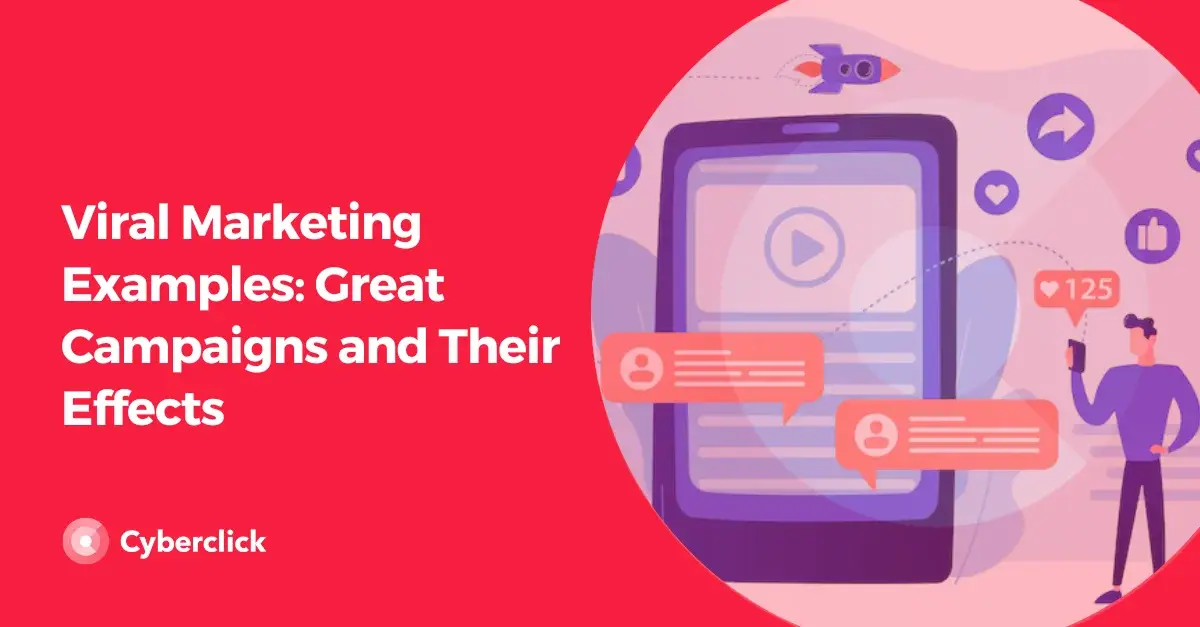
Leave your comment and join the conversation